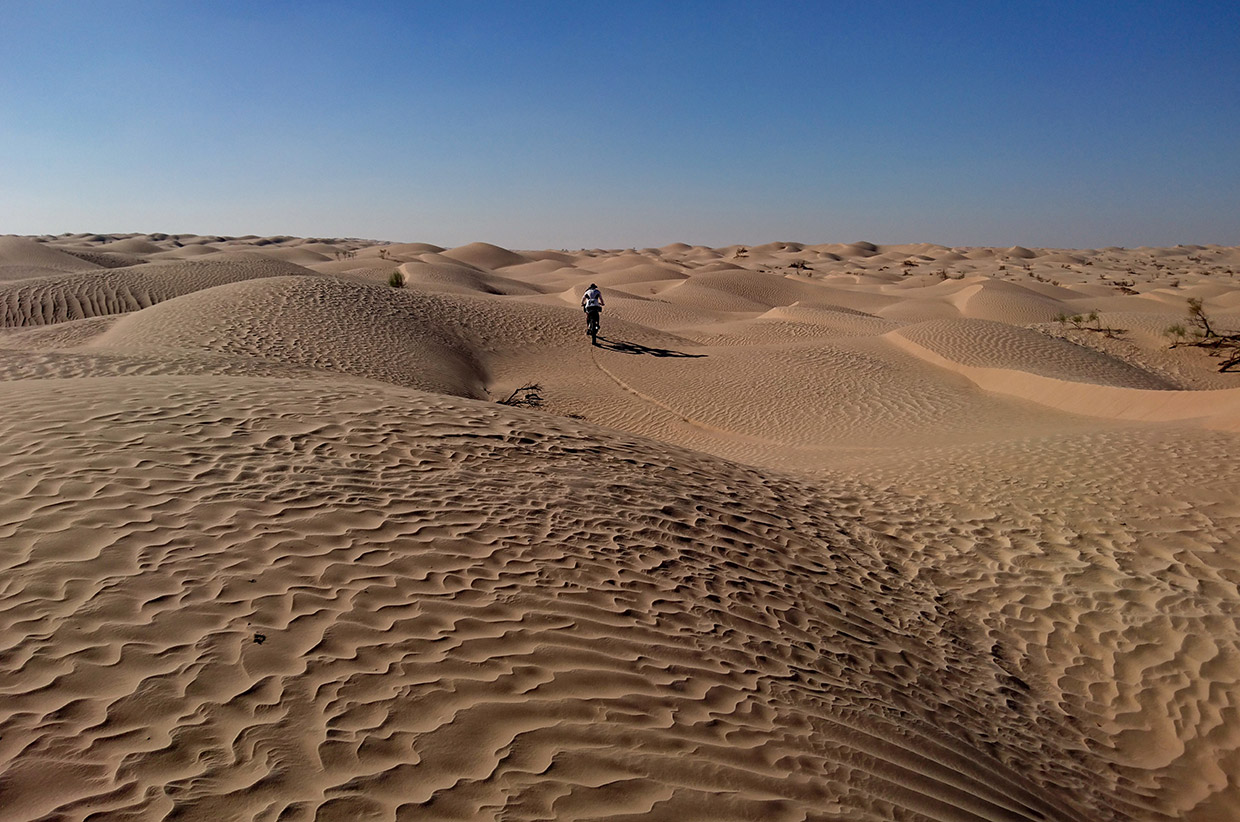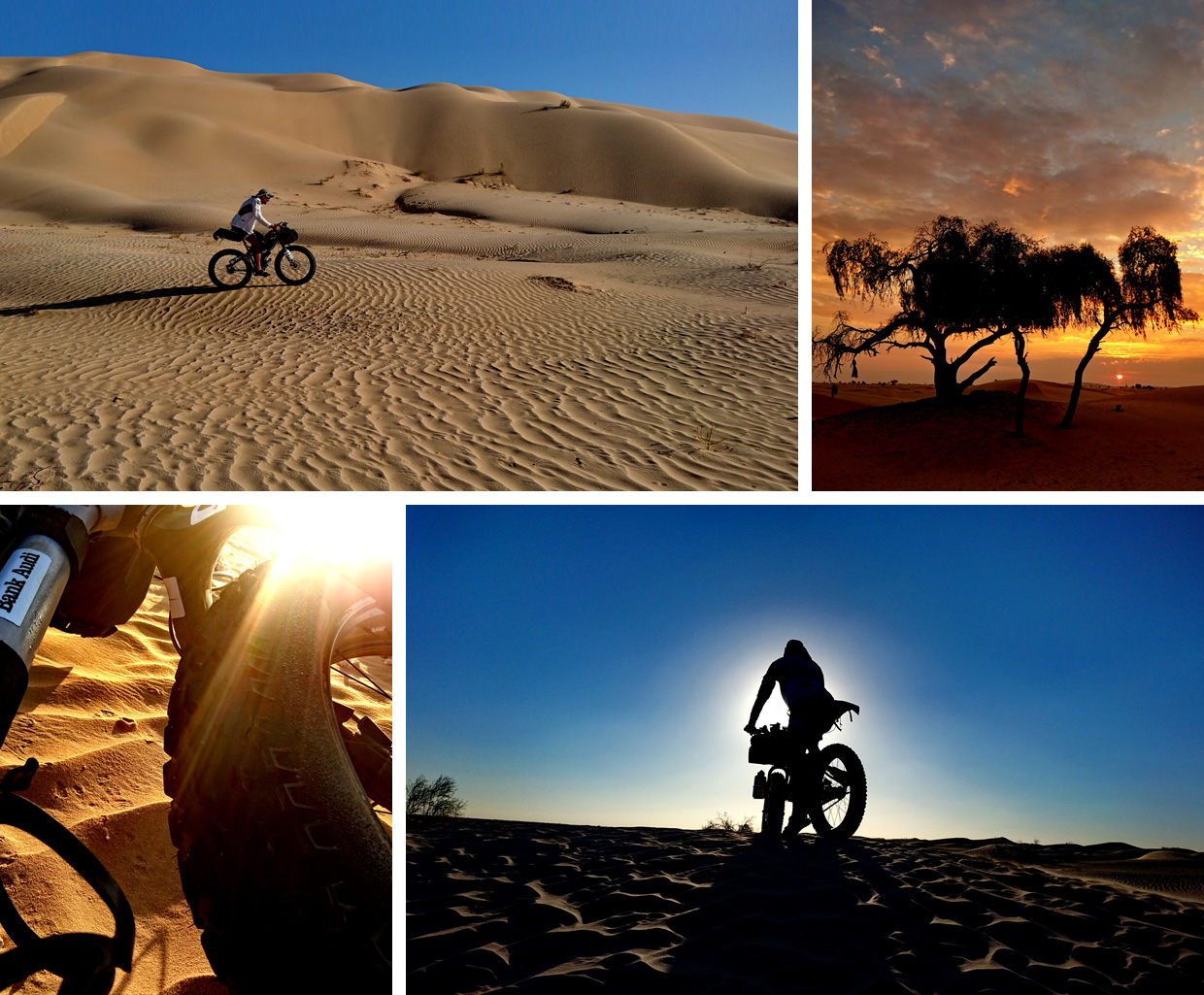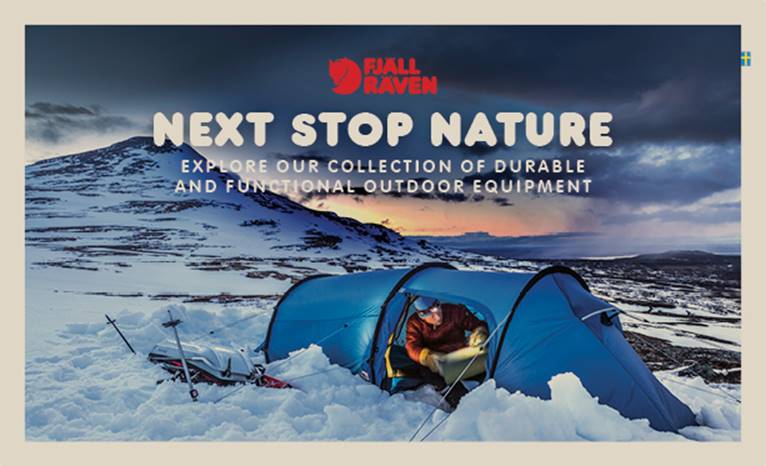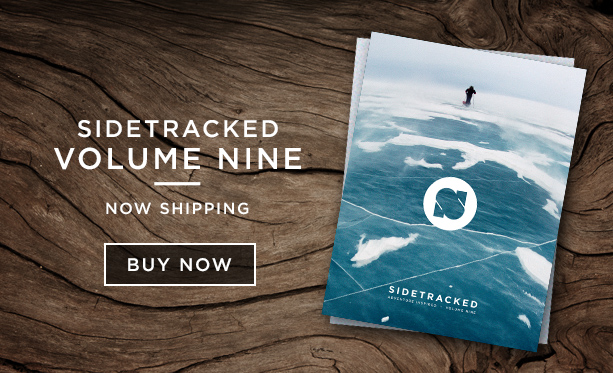Fatbiking the Empty Quarter
From The Field
Steve Holyoak talks to Robbie Britton about his expedition to fatbike 1,450km across the dunes and wilderness of the Empty Quarter Desert. Written by Robbie Britton
The challenge is taking a seemingly impossible task, such as cycling across the Rub’ al Khali, and making it possible with preparation, planning, and a lot of groundwork. The adventure itself is just the fun part.
The Rub’ al Khali, or Empty Quarter, is a huge expanse of desert. As the name suggests, there isn’t much in there. Steve Holyoak and Max Chaya planned to fatbike 1,450km across the dunes and wilderness, starting in the United Arab Emirates and cycling 70km a day to reach the coast at Salalah.
They met whilst mountain biking in Syria. The project was several years in the planning, and the physical part wasn’t what worried these two experienced adventurers. Steve is a Team GB 24-hour runner (with a personal best of 252.9km in 24 hours) and Max a Seven Summiteer who has also reached both poles on foot and rowed across the Indian Ocean quicker than anyone else. Endurance was not going to be a problem.
They had plenty of obstacles to deal with, most before the start of the cycle itself. Permits and military pick-ups meant re-routing and starting from scratch a couple of times, bikes had to be custom-made in the States and brought across to Oman, and there was also the slight issue of water – a precious substance in the Empty Quarter.
Planning on crossing in 21 days, with temperatures still rising up to 40˚C in December, Steve had calculated 8 litres per man per day. That’s 336 litres of water – or, more importantly, 336kg of weight for them to carry, which would have been impossible.
A month beforehand, in what turned out to be a harder challenge than the cycle itself, Steve and Max buried GPS-located caches along the way. Freeze-dried food and life-saving water would be dug up each night before they could start afresh at sunrise.
This meant that the chaps started each day with a 30kg fatbike to negotiate each and every dune, but the bigger, more permanent sand structures weren’t the toughest part. It was the dynamic 2m-high dunes, made of soft sand and much less consolidated, that sapped the energy more than anything else. Chucking one in every 30-40m can really throw a rider off his rhythm (and his bike). Even with 3.8in-wide tires, the bikes had to be manhandled through some of these sections.

But when you’re out on the bike nothing else really matters. It’s just cycle, drink, eat, sleep and repeat. There’s not really anything you can do about the rest of the world, and that appeals to Steve. You have to be a bit concerned about potentially stepping on a sand viper when you go for a pee in the night, but who isn’t?
The possibility of failure reared its head in several ways, though, with sand vipers being among the most worrying. With a four-hour life expectancy after being bitten, if anything reptilian had nipped either of them an evacuation would have been quickly implemented. But when I spoke to Steve about scorpion stings – extremely painful, but not deadly – the plan had been to crack on and let it pass. Thankfully neither plan had to be put into action.
The Empty Quarter wasn’t quite as empty as the name might suggest. Oil industry peppered the northern parts, but the southern section was more remote. Typically Steve and Max struggled to leave a settlement in the middle of nowhere as the occupants didn’t think they could survive without a good stock of camel meat. After one group offered to slaughter a camel right there and then, the pair had to leave with dried camel meat tied to their handlebars to keep them happy. The Omanis are known for their hospitality.
Of the 21 caches, 20 were found and excavated without issue. A desert fox made it to the last one first and decided to chow down on absolutely everything. Stuffed full of freeze-dried food, toilet paper, smarties and wet wipes, it had sauntered off. Only four powdered soups survived, which says more about them than the fox.
The region is one of astonishing beauty. According to Steve, riding through a dune landscape at dawn or dusk was the most spectacular. The simple beauty of rising and falling each day with the sun added to the enjoyment of the adventure, with simplicity being key.
The hardest parts of the trip weren’t the physically challenging sections. While planning the trip on Google Earth, the extensive sabkha known as ‘Umm as Samim’ (Mother of Poisons) looked flat, but little ridges every few centimetres made it a bumpy ride. The monotonous landscape of the flats made it the most psychologically difficult part. With polar and 24-hour racing backgrounds, Steve and Max were no strangers to the wearisome task of slogging through.
After three weeks of cycling, pushing and dragging the bikes up dunes, mixed with the all-too-short moments of gliding down, they reached Salalah on the Omani coast. The next week was spent in close proximity to a buffet table – a complete contrast with their life on the dunes – but it won’t be long until Steve and Max are out on the search for adventure again.




